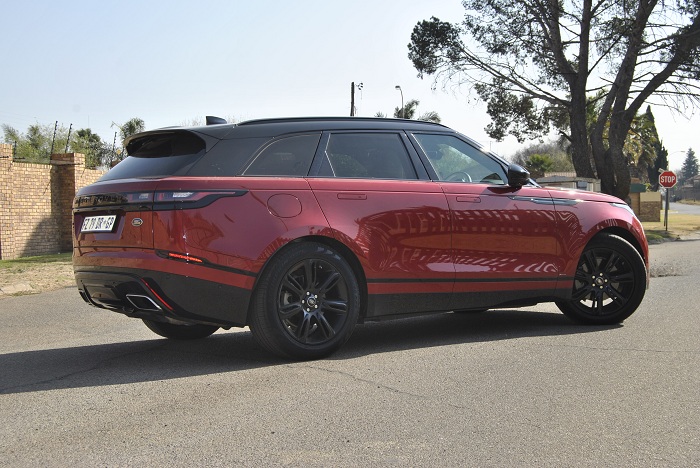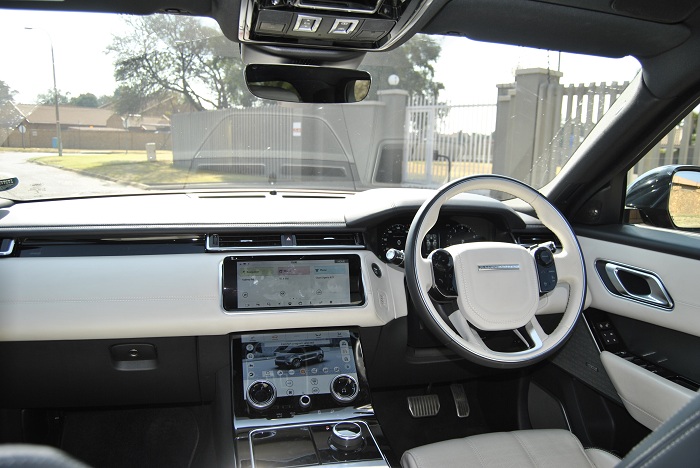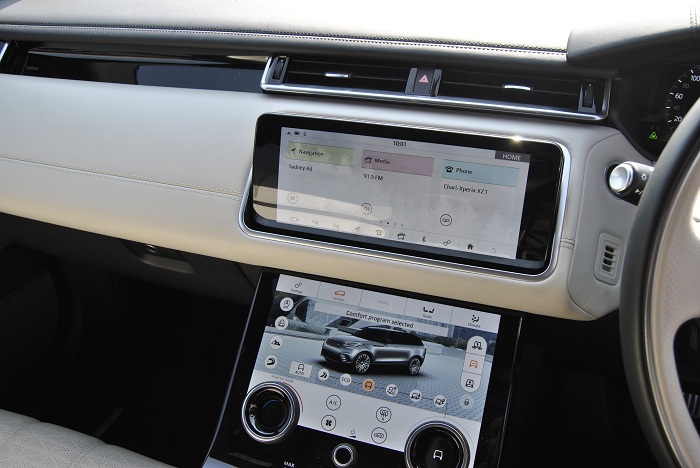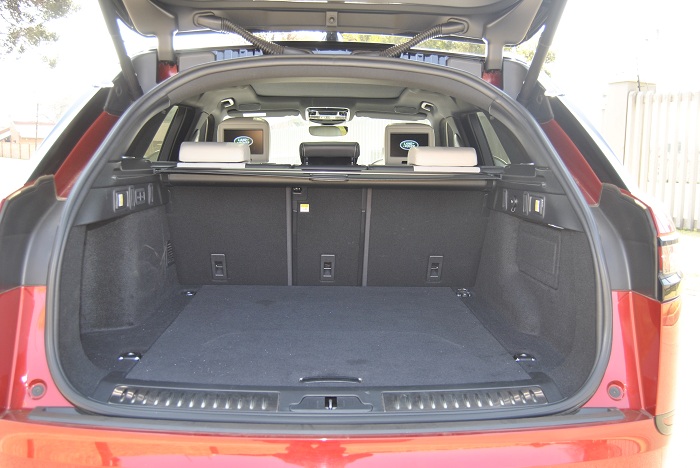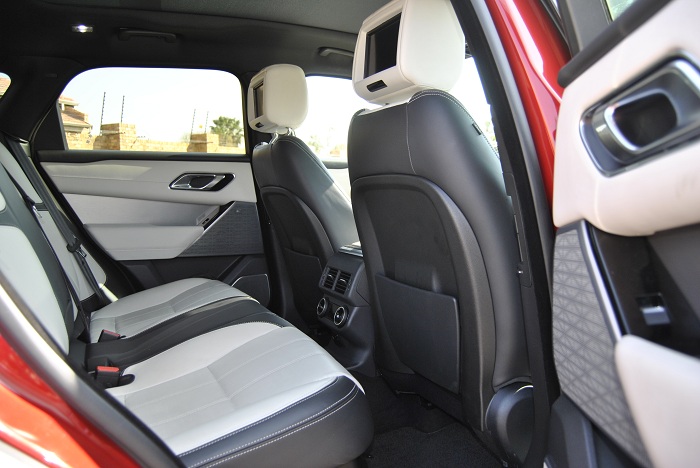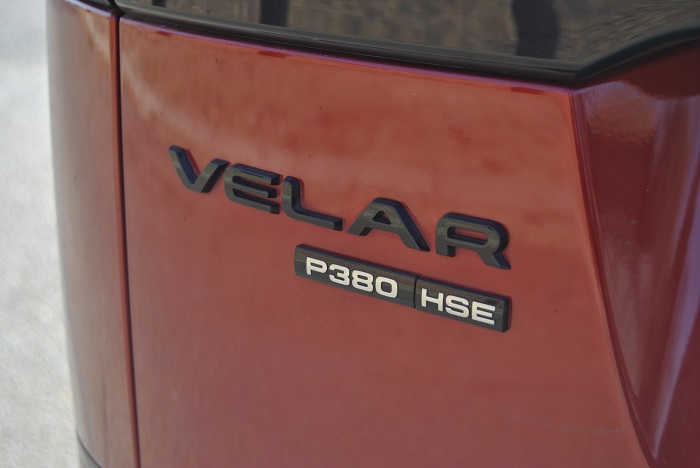Named after the original 1969 Range Rover concept with the moniker being derived from the Latin word velaris meaning veil, the aluminium platform underpinned Velar has not only been a styling revolution for the brand, but also a forerunner in the tech department with a multitude of gadgets enclosed in a futuristic array of digital and touchscreen displays that looks both premium and modern.
The style icon
There are however limitations to the Velar’s talents which, painfully, become apparent when a very menacing, Firenze Red Metallic P380 HSE R-Dynamic turned up outside the Autodealer office sporting a contrasting black panoramic and split seven-spoke, gloss black 20-inch alloy wheels wrapped in Pirelli Scorpion Verde rubber.
Certainly, the very least of the Velar’s problems comes in the aesthetics department, where what is the mid-range Range Rover arguably has the same, and perhaps even more, pulling power than its bigger siblings, the Sport and the full-size model, which were both recently updated with the same looks.
Billed as the sportiest Range Rover within the local line-up to date, the Velar cuts a sleek figure with its black honeycomb grille, long bonnet and angular LED headlights, with a side profile that it distinctively Range Rover and a rounded rear facia that its almost boot-like and features wraparound LED light clusters, integrated dual exhausts and a prominent black diffuser.
A triumph of craftsmanship
As mentioned though, the Velar’s biggest standout is its interior, which is as plush and luxurious in typical Range Rover fashion as it is loaded with equipment.
Taking centre stage is the Touch Pro Duo system, which consists out of a 10-inch touchscreen display that controls the infotainment features, while the lower display has the same dimension and houses the functions for the climate control, driving modes, Terrain Response 2 off-road system and seat settings.
Impressive tech a mixed bag
Compared to the somewhat impractical but classy looking white leather, the Union Jack patterns on the ventilated seats, chunky but soft-touch plastics, piano key black and aluminium inserts, the touchscreen setup is arguably the most disappointing as it is not only fiddley to use, but also lags too much from the moment you select the desired function to completion. Fortunately, the lower display reacts a tad faster, but still requires familiarisation to fathom.
Once you have mastered the setup, the Velar’s luxury aspects prevails in not only the level of fit-and-finish and overall feel, but also getting comfortable thanks to the multi-configurable seats and the electrically adjustable steering wheel.
This being the HSE, the level of tech is about as extensive as you could imagine with Adaptive Cruise Control, Autonomous Emergency Braking, Lane Departure Warning, quad-zone climate control, the excellent 23-speaker Meridian sound system, two eight-inch rear screens with wireless headphones, a USB input and HDMI jack, surround view camera system and Lane Keep Assist being only a smidge of what is on offer.
Speaking of the rear, the Velar’s lowered roofline failed to intrude on head or legroom with the panoramic roof contributing in lending an airy feel, while the boot can swallow 671-litres of luggage or up to 1 731-litres when dropping the rear seats.
Power!!!!
It is however up front where matters go a bit array for Velar, as the 3.0-litre supercharged V6 in the P380 is hobbled by a rather unexpected issue. With 280kW/450Nm on tap, the amount of twist is anything but a problem as it lashes the Velar with immediate effect when you push the loud pedal into the floor.
Nothing is also amiss with the ZF-sourced eight-speed automatic gearbox, which is as seamless in its everyday Drive mode as it is instant when you put it into Sport mode and use the fantastic aluminium gear shift paddles fixed to that grippy leather steering wheel.
The same goes for the ride which irons out the various imperfections with ease thanks to the four-chamber air suspension, but which gets stiffer, lower and encourages the driver to grab the Velar where it wants to be when exploiting the claimed 5.7 second 0-100km/h sprint in Dynamic mode.
Fun tanked
In fact, the P380’s biggest downturn, apart from the R1 409 491 asking price, is the comparatively tiny 63-litre fuel tank, which limits both range and the overall enjoy factor associated with that engine. Left predominantly in Comfort mode throughout its week stay, the P380 returned a best of 11.7-litres/100km, well out of reach of the optimistic 9.4-litres/100km claim.
Conclusion
As accomplished as it is both inside and out, the Velar P380 is largely compromised by that small tank and the allure of the cheaper D300 with its torque-rich V6 oil burner.
While this is likely to be of little concern for most owners, it also leaves the P380 going up against the cheaper and more powerful BMW X3 M40i, which makes the case of the bigger engine diesel stronger. If excess is everything, the P380 leaves no stone unturned regardless if you are on or off-road, but with its relatively more frugal powertrain, the D300 still rates as the Velar to have.



